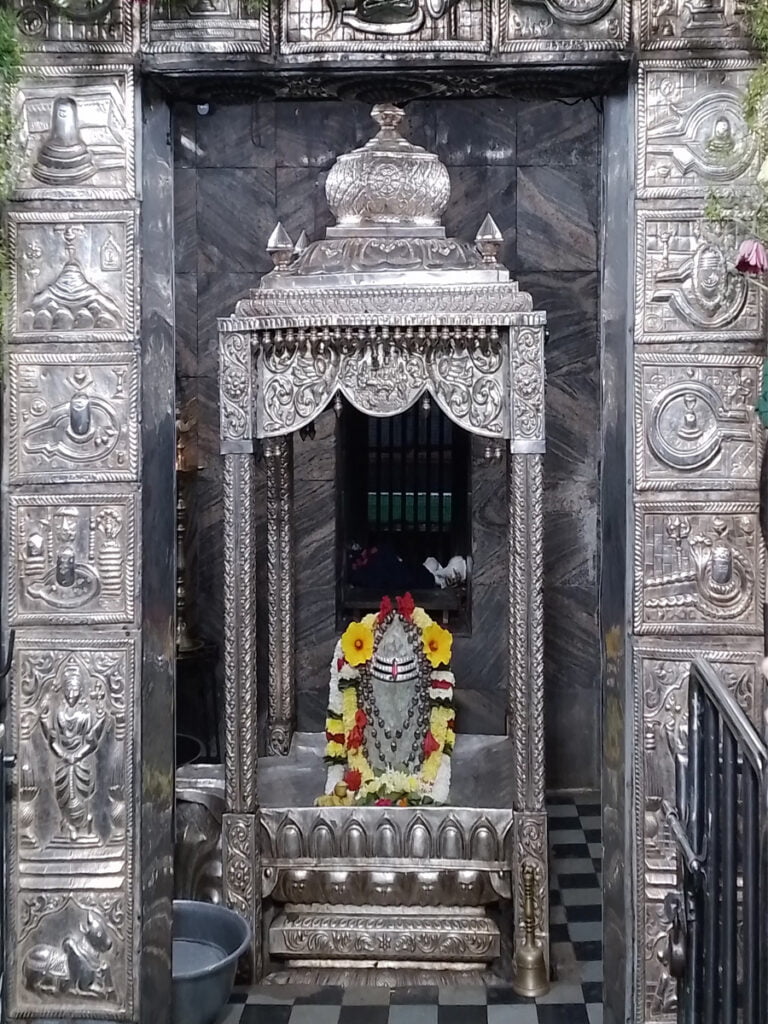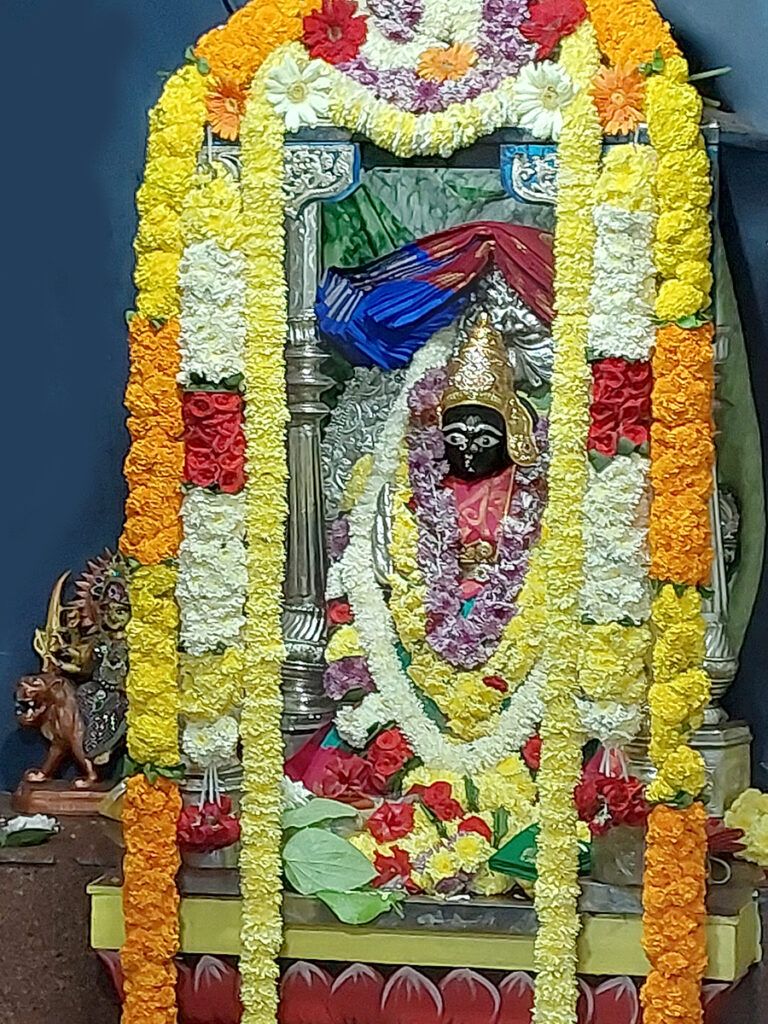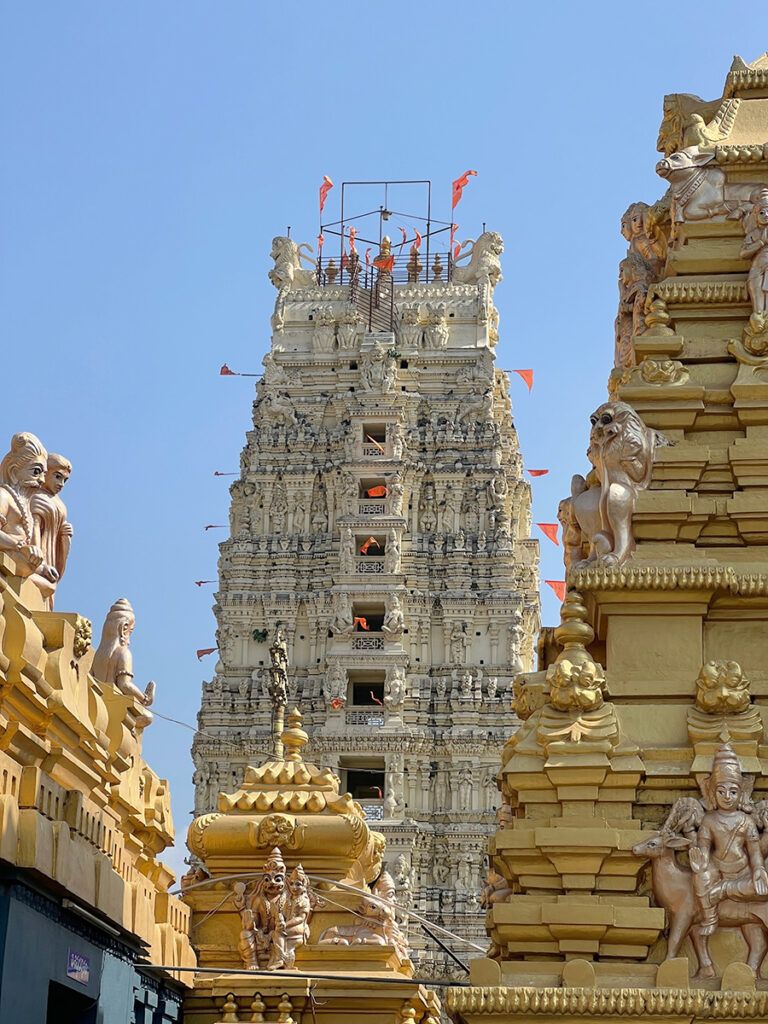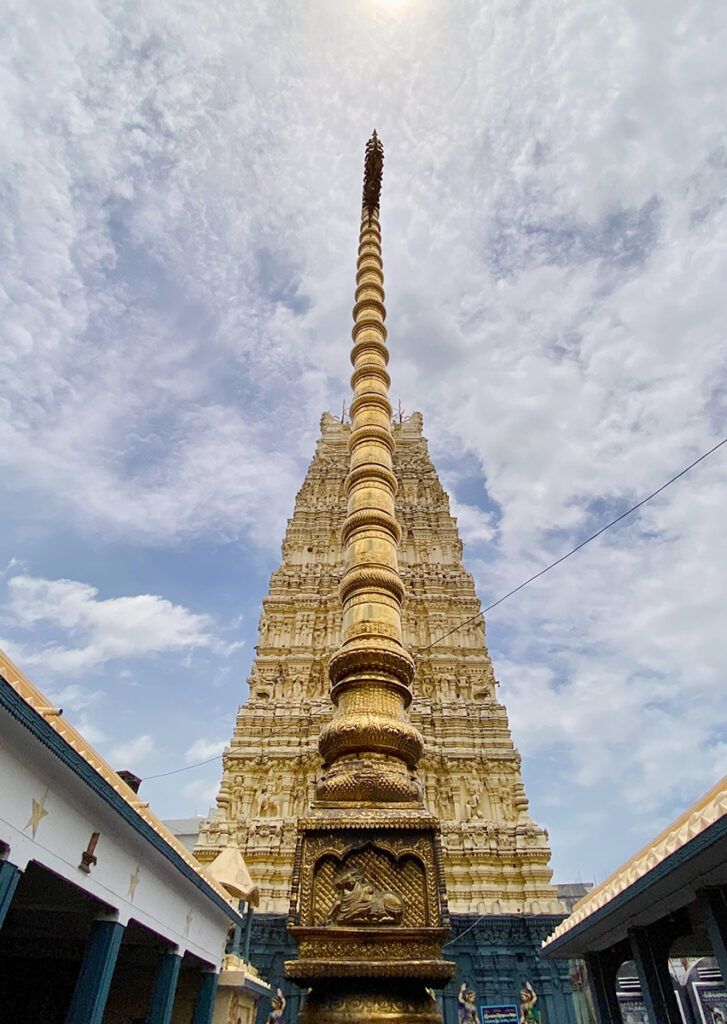Ksheera RamaLingeswara Swamy Temple Palakollu: Sacred 5 Shiva Lingas
Ksheera RamaLingeswara Swamy Temple is a Hindu temple dedicated to Lord Shiva, located in Palakollu, West Godavari district of Andhra Pradesh, India. It is one of the five Pancharama Kshetras, which are sacred to Lord Shiva in Andhra Pradesh.

The temple is believed to have been built in the 9th century by the Eastern Chalukya King Bhima. The main deity, Lord Shiva, is known as Ksheera Ramalingeswara Swamy. The presiding deity is a white-colored Shiva Lingam, which is said to have been installed by Lord Vishnu. The temple also has shrines dedicated to Goddess Parvati, Lord Ganesha, and Lord Vishnu.
Contents
- 1 History of Ksheera RamaLingeswara Swamy Temple:
- 2 Architecture of Ksheera RamaLingeswara Swamy Temple:
- 3 Religious significance:
- 4 Festivals at Ksheera RamaLingeswara Swamy Temple:
- 5 Legend of Ksheera RamaLingeswara Swamy Temple:
- 6 Places to visit near Ksheera RamaLingeswara Swamy Temple:
- 7 FAQ:
- 8 How to reach Ksheera RamaLingeswara Swamy Temple:
- 9 Google Maps:
History of Ksheera RamaLingeswara Swamy Temple:
The exact date of construction of the Ksheera RamaLingeswara Swamy Temple is unknown, but it is believed to have been built in the 9th century by the Chalukya dynasty. The temple is mentioned in the 11th century text “Nila Madhava Purana,” which states that the temple was built by the king Bhima I.
The temple underwent a number of renovations over the centuries. The main shrine was rebuilt in the 14th century by the Alludu family, who were the rulers of Palakollu at the time. The temple was further renovated in the 17th century by the Vijayanagara empire.
Read More>> Sacred 12 Jyotirlingas in India: A Symbol of Eternal Spirit
Architecture of Ksheera RamaLingeswara Swamy Temple:
The Ksheera RamaLingeswara Swamy Temple is a well-preserved example of Chalukya architecture. The temple is built in the Dravidian style and features a number of ornate carvings and sculptures.
The main shrine is a square-shaped structure with a pyramidal roof. The roof is topped by a 9-tiered gopuram, which is one of the tallest gopurams in Andhra Pradesh.
The inner sanctum of the temple houses the white-colored lingam, which is said to have been installed by Rama himself. The sanctum is surrounded by a number of other shrines dedicated to Vishnu, Lakshmi, Hanuman, and other Hindu deities.

Religious significance:
The Ksheera RamaLingeswara Swamy Temple is one of the five Pancharama Kshetras, which are sacred to the Hindu god Shiva. The other four Pancharama Kshetras are located in Draksharamam, Somaramam, Pushkarini, and Bhimashankaram.
It is believed that staying one day in Ksheerarama is equivalent to staying one year in Varanasi. The temple is a popular pilgrimage destination for Hindus from all over India.
Festivals at Ksheera RamaLingeswara Swamy Temple:
The Ksheera RamaLingeswara Swamy Temple celebrates a number of festivals throughout the year. The most important festival is the Maha Shivaratri festival, which is celebrated in February or March. Other important festivals include the Rathasaptami festival, which is celebrated in July or August, and the Brahmotsavam festival, which is celebrated in September or October.
Read More>> Divine Sri Bhramaramba Mallikarjuna Swamy Temple Srisailam
Legend of Ksheera RamaLingeswara Swamy Temple:
There are two main legends associated with the temple. The first legend tells the story of Upamanyu, the son of Sage Kaushik. Upamanyu was a poor Brahmin who lived in Palakollu. He was unable to provide milk for his family, so he prayed to Lord Shiva for help. Lord Shiva was pleased with Upamanyu’s devotion and granted his wish. He created a milk pond in Palakollu, which is now known as the Ksheera Pushkarni Tank.
The second legend tells the story of Lord Rama. After returning from exile, Lord Rama visited Palakollu and worshipped Lord Shiva. He was so pleased with the temple that he installed the milky white Shivalingam himself.

The legend of the milky white Shiva Lingam
According to one myth, the milky white Shiva Lingam in the temple was installed by Lord Vishnu. Upamanyu, the son of sage Kaushik, was performing his daily rituals in the temple when he ran out of milk. He prayed to Lord Vishnu for help, and Vishnu caused the Ksheera Pushkarini tank to overflow with milk from the mythical Ksheera Saagaram (the milky ocean). The Shiva Lingam in the temple is said to be made of this milk, and it is said to have the power to grant wishes.
The legend of Lord Rama’s visit
Another myth states that Lord Rama, Sita, and Lakshmana visited the temple during their exile in the forest. Sita made a Shiva Lingam out of sand and snails, and Lord Rama performed a puja to it. It is said that this Shiva Lingam is still worshipped in the temple.
Read More>> Bhimashankar Temple: 6th Jyotirlinga – Lions Seek Blessings
The legend of the five-headed Shiva Lingam
The fifth Pancharama Kshetra, the Kalahasti Temple, is also associated with a myth about a five-headed Shiva Lingam. It is said that this Lingam was originally installed in the Ksheera RamaLingeswara Swamy Temple, but it was moved to Kalahasti by Lord Vishnu. The five heads of the Lingam are said to represent the five elements of nature: earth, water, fire, air, and ether.
Other myths and legends
There are several other myths and legends associated with the Ksheera RamaLingeswara Swamy Temple. One myth states that the temple was built by King Bheemeswara of the Eastern Chalukya dynasty in the 9th century. Another myth states that the temple was visited by the 14th-century saint Ramanujacharya.
The myths and legends of the Ksheera RamaLingeswara Swamy Temple add to the rich spiritual and cultural heritage of the temple. They also help to explain the temple’s importance to Hindus.

Places to visit near Ksheera RamaLingeswara Swamy Temple:
Bhimavaram: Bhimavaram is a nearby town that’s known for its cultural heritage and vibrant markets. You can visit the Somarama Temple, one of the Pancharama Kshetras dedicated to Lord Shiva, located in Bhimavaram.
Draksharamam Temple: Draksharamam is a major pilgrimage site in Andhra Pradesh, known for its Draksharamam Bhimeswara Swamy Temple, dedicated to Lord Shiva. It’s about 30 km from Palakollu.
Kolleru Lake: Kolleru Lake, one of the largest freshwater lakes in India, is not far from Palakollu. It’s a great place for bird watching, and you can enjoy the serene natural surroundings.
Eluru: Eluru is a historical town with various attractions, including the Kolleru Lake Bird Sanctuary, the picturesque Dwaraka Tirumala, and the Venkateswara Swamy Temple.
Kakinada: Kakinada, a coastal town, is approximately 60 km from Palakollu. You can explore Coringa Wildlife Sanctuary, Uppada Beach, and the Subrahmanya Swamy Temple.
Vriddhachalam Temple: Located in the town of Palakollu itself, Vriddhachalam Temple is dedicated to Lord Shiva. It’s a beautiful temple with a unique architectural design.
Yanam: Yanam is a small territory of Puducherry, located along the Godavari River. You can visit the Yanam Beach, St. Ann’s Catholic Church, and explore the French colonial heritage.
Ksheerarama Temple: While you’re in Palakollu, be sure to explore the Ksheerarama Temple thoroughly. It’s a significant pilgrimage site with stunning architecture and a peaceful atmosphere.
Read More>> Kedarnath Temple: Where Faith Meets Jyotirling & Char Dham Yatra

FAQ:
What is the Ksheera RamaLingeswara Swamy Temple?
The Ksheera RamaLingeswara Swamy Temple is a Hindu temple dedicated to Lord Shiva. It is located in Palakollu, West Godavari district, Andhra Pradesh, India. The temple is one of the five Pancharama Kshetras, which are sacred to Lord Shiva.
What is the history of the temple?
The temple was built in the 9th century during the reign of the Chalukya dynasty. According to legend, the temple was built by Lord Vishnu, who installed the milky white Shiva Lingam that is worshipped at the temple.
What are the main features of the temple?
The temple has a tall gopuram, or tower, that is 120 feet tall. The temple also has a large mandapa, or hall, that is supported by 72 pillars. The sanctum sanctorum of the temple houses the Shiva Lingam, which is said to be the oldest of the five Pancharama Lingas.
What are the festivals celebrated at the temple?
The temple celebrates a number of festivals throughout the year, including Maha Shivaratri, Karthika Masam, and Ugadi.
How can I get to the temple?
The temple is located in Palakollu, which is a town in West Godavari district, Andhra Pradesh. The temple is about 1.7 kilometers from Palakollu Railway Station.
What are the timings of the temple?
The temple is open from 5:30 AM to 11:30 AM and 4:00 PM to 8:30 PM.
What are the important things to note while visiting the temple?
- Visitors are required to wear modest clothing while visiting the temple.
- Visitors are required to remove their shoes before entering the temple.
- Visitors are required to pay a small fee to enter the temple.
How to reach Ksheera RamaLingeswara Swamy Temple:
By Air:
The nearest major airport is Rajahmundry Airport, which is approximately 90 kilometers away from Palakollu. You can take a domestic flight to Rajahmundry and then continue your journey to Palakollu by road.
By Train:
The nearest railway station to Palakollu is Palakollu Railway Station itself. You can check the train schedules and book your tickets to Palakollu if there are direct trains from your location. Alternatively, you can also consider reaching Rajahmundry Railway Station and then taking a taxi or bus to Palakollu.
By Road:
You can reach Palakollu by road from various nearby cities and towns. The temple is located within Palakollu town. Here are some common routes from nearby cities:
From Rajahmundry: Palakollu is approximately 60-70 kilometers away from Rajahmundry. You can take a taxi or bus to reach Palakollu.
From Vijayawada: Palakollu is around 185 kilometers from Vijayawada. You can drive or hire a taxi to reach Palakollu.
From Eluru: Palakollu is approximately 56 kilometers from Eluru. You can take a taxi or bus to reach the town.
From Bhimavaram: Palakollu is about 16 kilometers from Bhimavaram. You can take a taxi or local transportation to reach the temple.
